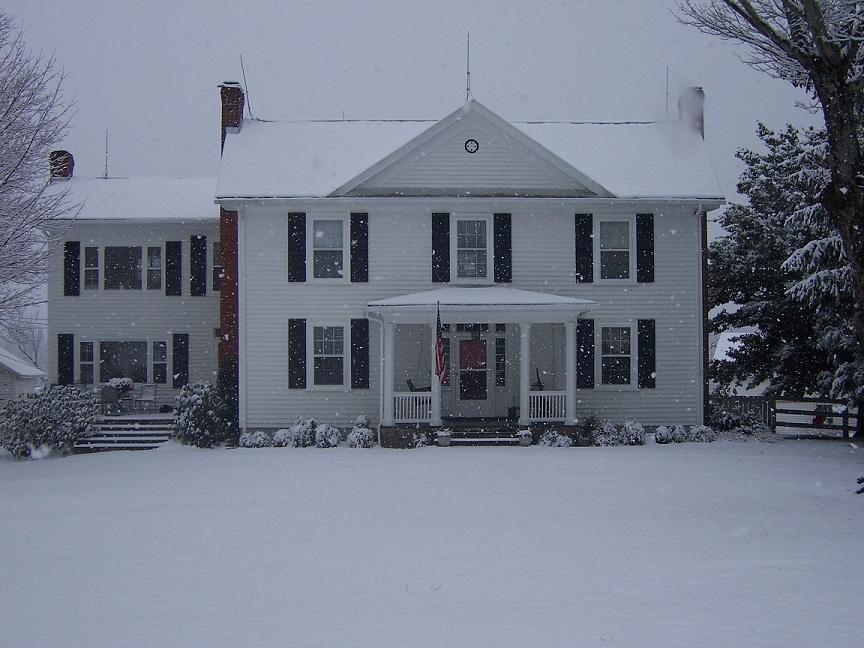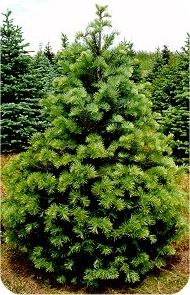|
History

The History of Greene Meadows Farm
The first record of Greene Meadows Farm is a Greene County Historical Society map dated 1842 that shows the Early
home on the present site of the "manor house". Legend has it that in 1888, Mr. Early approached Mr. Parrott with
a proposition. If Mr. Parrott would manage the farm, provide for Mr. and Mrs. Early, and marry their daughter, the farm would
be deeded over to him.
The farm's affluence around the turn of the century allowed for the addition of a large
dining room and bedroom with fireplaces and an attached kitchen with sleeping loft for the cook. They also put in a new road
from the farm to Celt Road. Several of the barns were built at this time and additional land was added.
By the
1930's, Greene Meadows Farm was more than 1,000 acres and had 44 people from 12 families living and working on the property.
It became famous for its polled Hereford cattle and a strain of mules widely known for their strength and endurance. These,
among other entrepreneurial projects, made Greene Meadows Farm one of the wealthiest in Central Virginia. The Farm was the
first to have electric lights in Central Virginia.
In 1974, the "manor house" and 24 acres left the Parrott
family and the Tree farm was started.
In 2003, Greene Meadows Farm and nearly all the surrounding land was put
into permanent easement and the development rites were donated to the Virginia Outdoors Foundation. After more than 160 years
of innovation growth and change, Greene Meadows Farm can retain it's beauty and character forever.
-Provided by
James Rhoads | 
The History of the Christmas Tree
1510 – The first written record of a decorated Christmas Tree comes from Riga, Latvia. Men of the local merchants’
guild decorated a tree with artificial roses, danced around it in the marketplace and then set fire to it. The rose was used
for many year and is considered to be a symbol for the Virgin Mary.
1530 – There is record from Alsace, France
(then Germany territory) that trees were sold in the marketplace and brought home and set up undecorated. Laws limited the
size to “8 shoe lengths” (slightly over 4 feet).
1600s – By the 17th century, it was common in Germany
to decorate Christmas Trees with apples. This practice was a holdover from the 14th and 15th centuries when evergreen boughs
hung with apples were the only prop used in the “miracle plays” that were performed at the churches on December
24. December 24 was Adam & Eve’s Day in the early Christian calendar, and the plays were used as ways of teaching
the Bible to a largely illiterate population.
1700s – In parts of Austria and Germany, evergreen tips were brought
into the home and hung top down from the ceiling. They were often decorated with apples, gilded nuts and red paper strips.
Edible ornaments became so popular on Christmas Trees that they were often called “sugartrees.” The first accounts
of using lighted candles as decorations on Christmas Trees came from France in the 18th century.
1800s – The Christmas
Tree was introduced in the United States by German settlers. It rapidly grew from tabletop size to floor-to-ceiling.
1851
– Christmas Trees began to be sold commercially in the United States. They were taken at random from the forests.
1853 – Franklin Pierce is credited with bringing the first Christmas Tree to the White House.
Late 1800s –
The first glass ornaments were introduced into the United States, again from Germany. The first ones were mostly balls, but
later chains of balls, toys and figures became more common.
Around 1883 – Sears, Roebuck & Company began offering
the first artificial Christmas trees – 33 limbs for $.50 and 55 limbs for $1.00.
1900s – Due to over harvesting,
the natural supply of evergreens began to be decimated. Conservationists became alarmed, and many magazines began to encourage
people to substitute an artificial “snow” covered tree, consisting of a branch of a deciduous tree wrapped in
cotton.
1901 – The first Christmas Tree farm was started in 1901 when W.V. McGalliard planted 25,000 Norway spruce
on his farm in New Jersey. Also in 1901, Theodore Roosevelt tried to stop the practice of having Christmas Trees out of concern
about the destruction of forests. His two sons didn’t agree and enlisted the help of conservationist Gifford Pinchot
to persuade the president that, done properly, the practice was not harmful to the forests.
1930s – President Franklin
D. Roosevelt started a Christmas Tree farm on his estate in Hyde Park, New York.
1966 – The National Christmas
Tree Association began its time-honored tradition of having the Grand Champion grower present a Christmas Tree to the First
Lady for display in the Blue Room of the White House. That year, Howard Pierce of Black River Falls, Wisconsin, presented
a tree to President Lyndon Johnson and First Lady Lady Bird Johnson.
Today – Approximately 25-30 million Real Christmas
Trees are sold each year in the United States. Almost all of these come from Christmas Tree plantations.
-Timeline
provided by The Rocks Christmas Tree Farm, Bethlehem, NH |
|